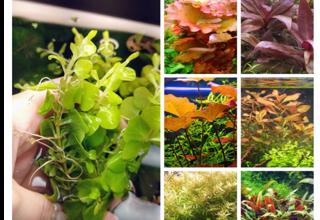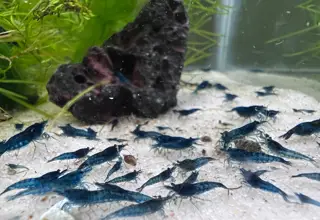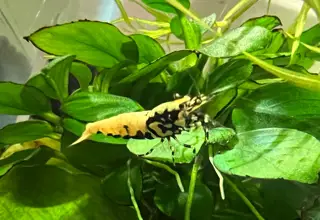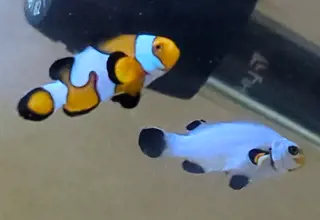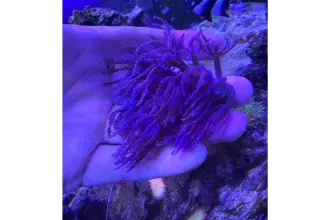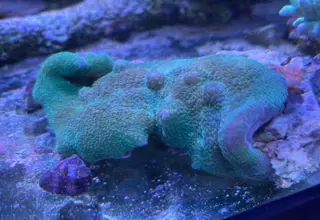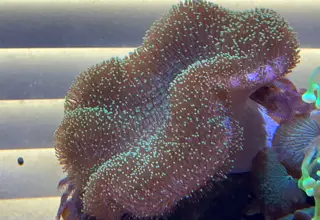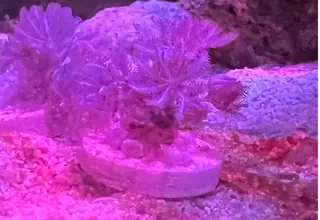Stomatella Snails: Benefits, Removal, Where to Purchase & More
Posted by on 3/15/2023
We use affiliate links and may receive a small commission on purchases.
Over 20 species comprise the Stomatella snail genus. These small invertebrates are often accidentally introduced into saltwater aquariums, and once introduced, can be difficult to remove.
These snails provide unique benefits to a saltwater ecosystem and are sometimes sought-after for their algae-combatting abilities. However, for those that want a snail-free tank, their removal can be difficult. In this post, we'll briefly discuss the genus, and we'll review some of the advantages and disadvantages of keeping or removing them.
Stomatella Snails
Stomatella snails are small invertebrates native to the Indo-Pacific that closely resemble, and are often mistaken for nudibranchs. They're frequently introduced into an aquarium by accident, hitchhiking a ride on corals, such as chalices and blastos, or may attach to a piece of live rock that's being transported from one tank to another.
It's easy to understand why these snails may be mistaken for a small nudibranch. Their small shells are covered by a thin layer of skin, giving them a sea slug-like appearance. While there are over 20 different Stomatella snails, the species we see most frequently is Stomatella auricula, which was previously categorized as Stomatella varia. This species typically has a rather dull, beige coloration, while other Stomatella species, such as Stomatella impertusa, will sport a rose-colored appearance.

Size
Stomatella snails are small creatures, and typically range between 6-16mm in size, one of the largest Stomatella species, Stomatella elegans only grows to about 25mm.
Due to their small size, it's easy to understand how these snails can slip past a hobbyist's quarantine process.
Benefits in a Saltwater Aquarium
Stomatella snails are excellent algae eaters. They make a great addition to a tank's clean-up crew and will consume diatoms, cyanobacteria, and other commonly seen saltwater algae.
These snails are most active at night, so you may need to use a flashlight to catch these snails in action. They're relatively fast-moving and easily reproduce in a tank if a potential mate is present. Population sizes can grow rather quickly, and a pair of Stomatella snails can quickly turn into a colony of over 100 or more in a few months.
Breeding
Unlike many snail species, Stomatella snails require a mate to reproduce, and if present, will readily breed in a well-maintained marine aquarium. As broadcast spawners , these snails will climb to a high point before releasing their gametes directly into the water column.
Spawning typically occurs during the day, and the process is visible to the human eye. It will appear as a brief, cloud-like mixture being released into the water column. The cloudiness produced by spawning typically clears up within a few minutes.

Disadvantages
The biggest disadvantage to Stomatella snails is tank overpopulation. Some hobbyists may consider their appearance unsightly, and since these snails love to cruise around the aquarium glass, in large numbers they may restrict visibility into the tank. Keep in mind that they are mostly active during the night, so this may not be a dealbreaker for many hobbyists.
Since they reproduce easily, they may also make their way into aquarium equipment, restricting flow rates, and clogging up filtration.
Removal
Due to a Stomatella Snail's dietary dependency on algae, their population sizes often self-regulate. Once all available algae are consumed, you should begin to see a reduction in population size.
In many instances, Stomatella snail population explosions may be further curtailed by introducing predatorial livestock. Many types of wrasses, such as the Six-Line Wrasse, and Yellow Coris Wrasse will consume them. Certain shrimp, such as the Scarlet Skunk Cleaner Shrimp may also view them as a meal.
Manual removal is also an option. Hobbyists can try and net Stomatella snails, or try placing a credit card near a snail for it to climb upon.
Where to Purchase
Stomatella snails can be difficult to acquire. We've seen them for sale on our marketplace, but they're typically hard to find.
For customers in the United States, Missouri-based SaltyUnderground will occasionally have them in stock and tend to be quite affordable.
Conclusion
Whether you choose to keep or remove Stomatella snails largely boils down to individual preference. While some hobbyists will pursue them for their algae-eating abilities, others may consider their appearance unsightly.
Now that you've learned a bit about this genus of snails, do you plan on adding some to your saltwater aquarium? Let us know by commenting below, or by visiting our community forum and marketplace where you can connect and trade with other hobbyists.
